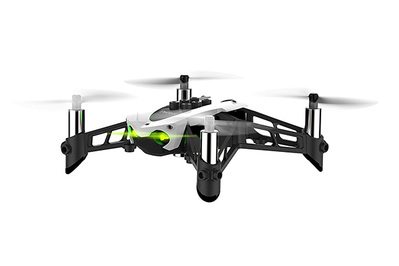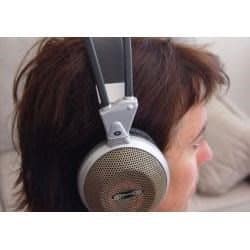After 25 hours of study and lots of days of real world flight and photography with nine leading models, we’ve found that the DJI Mavic Guru is the best drone for many aspiring aerial photographers and videographers. It matches or beats similarly priced competitors in picture quality, ease of flight, and autopilot manners, but it really stands out for its portability–it’s lighter and smaller than a full 1-liter water bottle, so it is going to fit in just about any bag.
 |
DJI Mavic Pro
A high-performance drone Our best pick combines easy flying, class-leading portability, fantastic battery life, fantastic picture quality, three-axis stabilization, and excellent fail-safe features in a $1,000 package. |
The best camera is always the one you have with you, and drones are no exception: The DJI Mavic Pro’s extraordinary portability means you’ll bring it into more places, which means you’ll get much better shots. As it measures only 3.3 by 3.3 by 7.8 inches and weighs 1.6 pounds when completely folded, you can take it almost everywhere–just unfold everything, and you’re good to go. We got approximately 19 minutes of flight time in our tests, and its own 4-mile operating range extends farther than the eye could see. It comes with a high quality camera which captures 4K or 1080p footage, as well as a smartphone program which lets you preview your on-drone camera for pictures and also for first-person-viewpoint piloting ease. The sole drawback is that you are going to need a current smartphone tablet to take full advantage of its FPV and live-streaming capabilities.
Of all of the drones we have ever tested, the GoPro Karma is the simplest to fly, as a result of a user-friendly UI and an intuitive controller which does not demand a smartphone. It lacks obstacle-avoidance sensors, however, and that means you have to be careful whilst flying it, and it doesn’t provide the range or portability of the top pick. It can take excellent stills and movie due to the added GoPro Hero5 Black, also you can eliminate its gimbal and utilize that separately from the drone for stabilized handheld shooting. It’s also a excellent value, because it ships with all the handheld Karma Grip.  (GoPro states it’s going to stop selling drones once its present stock of the Karma stands out. We are monitoring the situation, and we are going to update this manual when the Karma becomes unavailable.)
If our other picks are akin to flying GoPro Heros (that is literally what the Karma is), the DJI Phantom 4 Pro is far similar to a flying Sony RX100. Its 1-inch detector is nearly four times larger than the 1/2.3-inch detectors found at the Mavic Pro and Karma, and it can shoot 20-megapixel raw and JPEG still pictures in addition to 4K 60-frames-per-second video. Its lens includes a mechanical shutter, and manual controls abound, so seasoned photographers can dial into their preferred settings. Relative to our top pick, it also includes a more sophisticated collision-sensing system and more battery life (a 25-minute average in PCMag tests), and it has a rugged magnesium-alloy chassis. Additionally, you get all the exact same intelligent flight modes since you do with the Mavic Guru, as well as Sport Mode (which empowers a 45 mph speed) along with an intriguing new mode called Draw (draw a line on the display, and the drone will soon fly this route).
If all you want is something to catch aerial footage event for personal use and social-media sharing, you can save a few hundred dollars by getting the DJI Spark. Despite weighing half as much as the Mavic and gearing up to approximately the size of your hands, it has all the essential features you need from a movie drone: 1080p video recording, picture and flight stabilization, collision-avoidance engineering, and an added controller, and smart-flight modes such as ActiveTrack (tracks and follows a topic) and gesture controls all come standard. This mix of portability and user friendly AI creates the Spark the perfect picture- and – video-capturing companion for beginners who care more about ease of use compared to innovative biking and imaging abilities.
If you are unfamiliar with flying drones or even in the event that you only have to keep your skills sharp (and who does not), we suggest obtaining a cheap coach drone before placing a pricey investment aloft. Because of this, we recommend the Parrot Mambo. This tiny quadcopter is around the size of the extended hand and flies through touch controls onto your smartphone. It lacks a camera and fancy features like GPS-assisted position hold, and its battery life is rated at 9 minutes (nearer to 7 minutes in our tests), but it’s the ideal drone for getting used to the control design. It also ships with grabber and cannon attachments that allow you to pick up small objects and blast away targets with little plastic pellets.
Irrespective of what drone you choose, know that there is an evolving body of regulations encompassing drone flight and proper use which you ought to get acquainted with prior to buying and flying.








